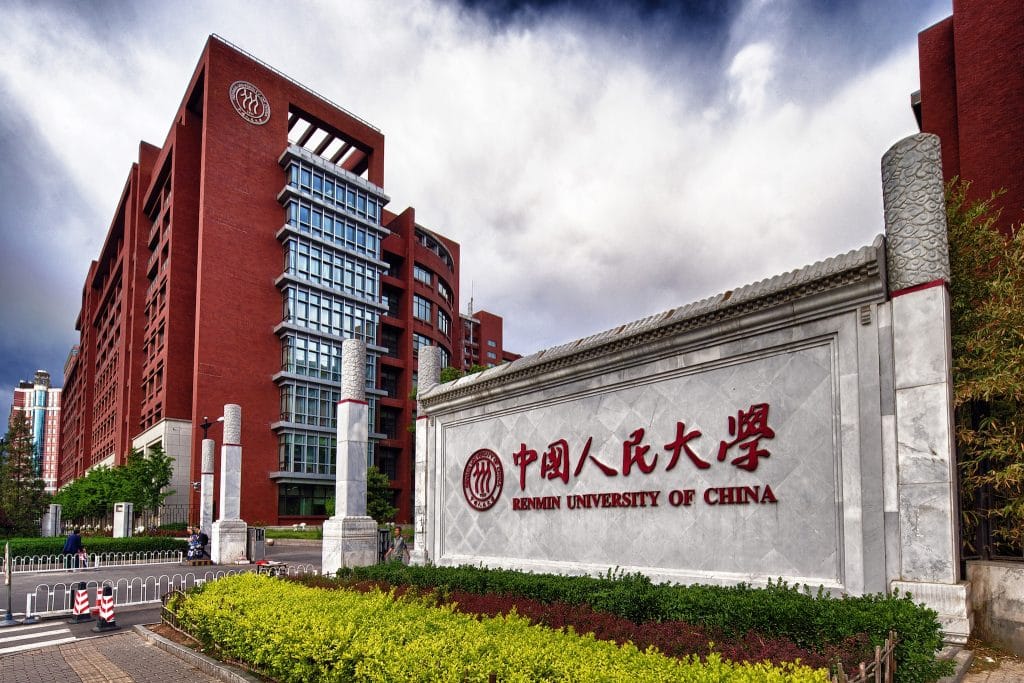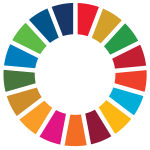Esta web utiliza cookies para que podamos ofrecerte la mejor experiencia de usuario posible. La información de las cookies se almacena en tu navegador y realiza funciones tales como reconocerte cuando vuelves a nuestra web o ayudar a nuestro equipo a comprender qué secciones de la web encuentras más interesantes y útiles.
Integration of the Sustainable Development Goals into language proficiency courses
Description
Institution
Renmin University of China

Organizations/areas of the university involved
School of International Studies
Country
china
To accelerate Education for the Sustainable Development Goals among our students, the SDGs have been integrated into a compulsory, semester-long, language proficiency module.
Since the 2030 Agenda for Sustainable Development was adopted unanimously by all United Nations Member States in 2015, Education for the Sustainable Development Goals (ESDGs) became a vital mission.
With this call for action in mind, the School of International Studies of the Renmin University of China intensified efforts to integrate the SDGs into its curricular activities.
The study plan of some courses can be more easily adapted to integrate ESDGs. For this reason, language proficiency classes were chosen as an ideal candidate.
While learners of all grade levels should acquire the knowledge and skills needed to promote sustainable development, this initiative focuses on undergraduate students. It is our belief that they will be part of the generation of leaders, decision-makers, and practitioners that will shape the implementation of the Sustainable Development Goals in the Decade of Action.
Specifically, this initiative targets all the undergraduate students of the School of International Studies, for whom this course is compulsory during their first year of study. Furthermore, students of other departments can choose it as an elective class.
The aim of this project is to equip students with a comprehensive understanding of sustainable development issues and combine this with training in key transferable skills that each learner needs to take part in activities and projects related to the SDGs.
To achieve this goal, the course was designed to combine SDGs knowledge and language proficiency skills. Special attention was paid to the instruction of language for the SDGs, the study of key institutions involved in the SDG framework, and the development of debate and argumentative skills.
In the future, we are determined to continue to offer this module and we are eager to share our expertise with any other institution or instructor who might be interested. Additionally, we hope to launch co-curricular initiatives that can reach students, staff, and the community at large.
Results and impact measured or expected
Since 2017, this initiative has been able to reach all the undergraduate-level students of the School of International Studies of the Renmin University of China. Furthermore, as a result of the positive feedback of their peers, students from other departments also chose to attend this course as an elective class.
This initiative had a positive impact on students’ preparedness to not only understand and discuss current events but also join extracurricular activities related to sustainable development. Examples include, but are not limited to, MUN conferences, diplomatic simulations, academic conferences, and internship opportunities. We are proud that our graduates enter the job market, or continue their academic studies with a clear understanding of the importance of the 2030 Agenda for Sustainable Development.
Connection with the SDG framework
As outlined by SDG4, target 4.7, it is of paramount importance that by 2030 learners of all grade levels are equipped with the knowledge and skills needed to promote sustainable development. This initiative contributes to this goal in four ways:
- First, it provides all enrolled students with a basic understanding of key sustainable development issues both globally and locally.
- Second, it helps students understand the importance of the SDG framework in relation to other global commitments.
- Third, it inspires and empowers students to create positive change.
- Lastly, it integrates SDGs knowledge with other transferable skills including critical thinking, self-awareness, reflection, problem solving, and teamwork.
Barriers and follow up
The main barriers encountered have been:
- The heterogeneity of students’ proficiency levels which initially prevented some students from confidently joining the class discussion. To overcome this, classes were organized over two separate periods: during the first one, students would brainstorm pre-existing knowledge, learn relevant vocabulary and conduct group activities. This, combined with weekly assignments, would help less proficient students familiarize themselves with the content. In the second period, students would participate in discussions, debates and presentations. This format proved to be very effective because students engage in class discussion more easily once they are familiar with the vocabulary.
- Time limitations and the breadth of the content to discuss. To overcome this and ensure all SDGs were discussed during the semester, they were incorporated into eight themes: poverty and hunger, education, inequalities, climate change and the environment, peace and cooperation, economic growth and jobs, health and well-being, SDGs interdependence.
Transferability of the initiative
SDGs-oriented language proficiency courses could have a vast reach. English as a second language (ESL) courses, for example, are offered worldwide. In countries where English is not the official language, ESL classes are usually mandatory for all undergraduate students. Furthermore, each university, even those in English-speaking countries, offers ESL classes or other language proficiency courses.
The biggest advantages of integrating the SDGs into a language class are its flexibility and potential for transferability.
The goal of language courses is for students to be able to communicate in any situation. In this aspect, language for the SDGs is necessary to navigate today and tomorrow’s global topics. Furthermore, the multidisciplinary nature of the SDGs makes these courses easily adaptable across different majors and contexts. The depth of the courses’ content, on the other hand, can be matched to the proficiency level of students and the length of the course.
Education 4 SDG funciona gracias a WordPress

